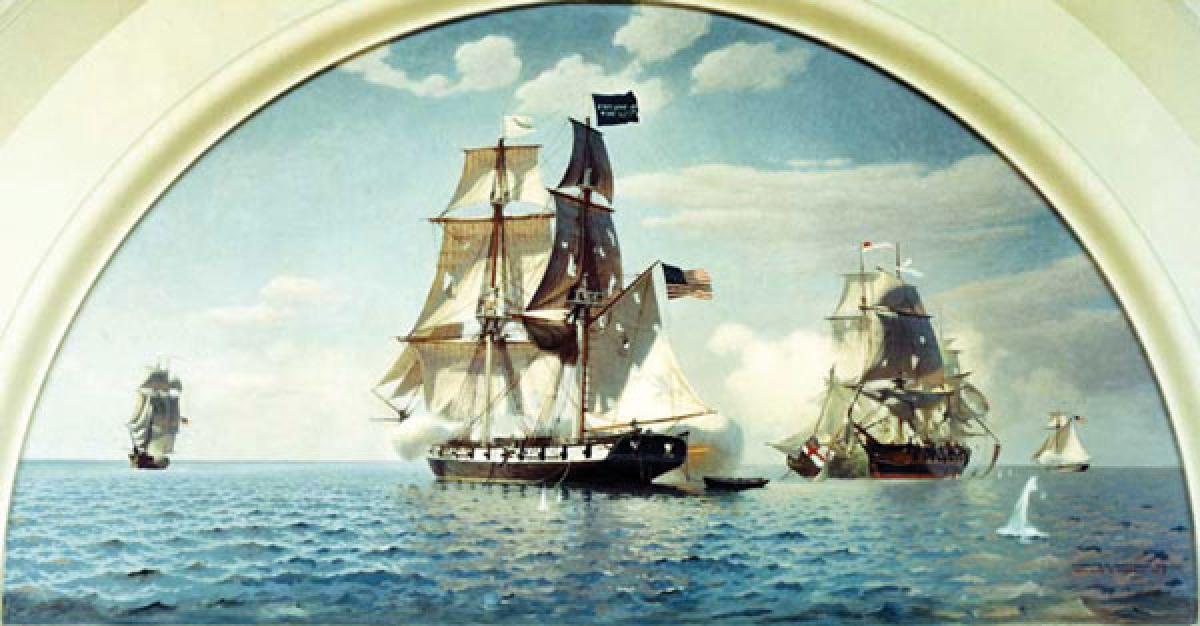As a young lieutenant, Oliver Hazard Perry had been impressed with the courage and audacity of fellow-Lieutenant James Lawrence. The latter had joined with Lieutenant David Porter in a raiding party ashore in 1803 to destroy a number of enemy vessels beached 35 miles west of Tripoli and later served as second-in-command under Stephen Decatur when Decatur caught the attention of the world by stealing into Tripoli Harbor and destroying the captured Philadelphia.
Perry and Lawrence became fast friends, “shipmates” as that term is used in an almost hallowed sense among sailors whose bond is a sense of commitment as well as friendship. They served together again in the USS Constitution during an expedition against Tunis, and yet again, just before America went to war with Britain for the second time, in 1812, when each was given command of the two gunboat detachments tasked with defending New York Harbor. As anti-British sentiment rose, a local newspaper editor had questioned why these gunboat commanders “swaggered” through the city’s streets rather than using their swords against the Royal Navy ships that were then lurking outside the harbor. To this Lawrence typically replied that the swords of the so-called “swaggerers” were sharp enough to “cut off your ears and will eventually be employed in that service if any future remarks injurious to their reputation should be inserted in your paper.”
As time went on, fortune seemed to favor Lawrence. Perry had run a ship aground and consequently was denied an early command in the war. His friend, meanwhile, was given the sloop Hornet and quickly vindicated that decision by capturing the privateer Dolphin in the first month of the war, then seized the British brig Peacock early in 1813, earning a promotion to captain and command of the frigate Chesapeake.
But fate often sails a circuitous course. In June, Lawrence’s audacity trumped his reason, and before his crew had been properly trained, he unwisely engaged HMS Shannon, known to be the best-trained frigate in the Royal Navy. Almost immediately, Lawrence was mortally wounded and as he lay dying he pleaded with his men, “Don’t give up the ship.” But it was too late. In less than 15 minutes, the Chesapeake was defeated.
Perry, still denied a seagoing command, eventually was given a squadron charged with the defense of Lake Erie. Despite the “backwater” nature of this assignment, it was strategically very important because of the threat of a British invasion into Ohio.
The ultimate test came on 10 September 1813, when Perry’s squadron engaged a British squadron in “line-of-battle” combat. Because of its size and its relative infancy, the U.S. Navy had no fighting instructions to cover fleet engagements, so Perry had to rely on what he had learned from reading accounts of previous line-of-battle engagements, most of them British.
Perry acquitted himself well and defeated the British squadron, securing control of Lake Erie and enabling the Americans to subsequently reclaim Detroit, which earlier had fallen to the British. Perry’s flagship for the battle was—appropriately enough—the brig Lawrence. But of even greater significance, Perry had honored his fallen shipmate by hoisting a battle flag emblazoned, “DONT GIVE UP THE SHIP,” ensuring that those words—once uttered in desperation and defeat—would become a battle cry that would inspire and instruct future generations of American sailors for all time.



